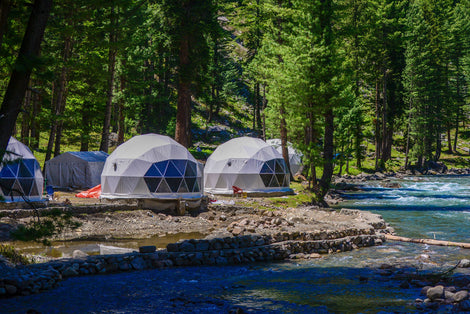Troubleshooting Battery Connection Problems
Off-grid solar setups give homeowners freedom, but with that freedom comes some upkeep. One of the most frustrating hiccups involves battery connection problems. When the connection between your batteries and inverter isn’t solid, everything else in the system starts to fail. Lights flicker, appliances shut down, and sometimes your backup power disappears right when you need it most.
Keeping that battery connection strong isn't just about smooth daily operation. It’s also a big deal during unexpected power demands or seasonal transitions when your system might be working harder than usual. Knowing how to spot small issues before they turn into serious ones can help you keep everything running the way it should, especially when you're relying heavily on off-grid power to keep life going.
Common Battery Connection Problems
Most power issues in an off-grid home can be traced back to a few simple battery connection troubles. These aren’t always easy to spot right away, especially if everything seems to be set up correctly. But even small problems like a loose wire or corroded connector can cause major disruptions if left alone.
Here are three of the most common problems that show up in off-grid solar kits:
1. Loose or Corroded Connections
Connections that look fine at first glance might not actually be tight. Over time, vibrations from wind or weather can cause cables to shift, especially if they weren’t clamped down properly during installation. That looseness can lead to inconsistent power or full system dropouts. Corrosion from exposure to moisture or battery acid also weakens the contact, adding resistance and reducing voltage levels.
2. Faulty Battery Terminals
Sometimes the issue isn’t the cable—it’s the battery post itself. Terminals can become worn, bent, or stripped during maintenance or repeated adjustments. If a terminal looks cracked or has noticeable residue built up around it, chances are it’s not delivering a clean flow of power. Batteries sitting in a spot where water or condensation collects can suffer even faster wear.
3. Wiring Issues in the Battery Setup
A strong off-grid solar system depends on solid wiring. If wire gauges are too small or connections are not secured with the right tools, even a well-designed system can break down. Poor wire routing can also lead to unintentional shorts, especially in tighter setups with limited space. Overloaded or poorly matched components will heat up wires, which affects battery health and overall safety.
You might notice these issues show up as blinking inverters, random shutdowns, or batteries that don’t seem to charge fully even after a long sunny day. One homeowner had a setup where everything looked perfect—until they started losing power every other day. Turned out, a single wire had worked itself loose at the terminal due to a shaky battery frame. Once they re-secured it, the system ran just fine.
Catching these problems early avoids bigger issues later, like damaged batteries or fried inverters. This next part covers what you can do right now to start troubleshooting safely and confidently, without risking damage or making things worse.
Detailed Troubleshooting Steps
Once you’ve spotted a possible battery issue, it’s time to get hands-on. Don’t rush it, though. Take things step by step and shut down all power from the system before you begin. Solar kits store a lot of energy, and it’s better to be safe than sorry.
Start with the basics:
- Check and tighten connections
Look at each cable connected to your battery bank. If a clamp feels the slightest bit loose, tighten it using the proper size wrench. Don’t overdo it—overtightening can strip threads or crack terminals. Double-check that your lug connectors are flush against the terminal and not sitting at an angle.
- Look for corrosion and clean it
White or green powdery buildup? That’s corrosion from the battery off-gassing or moisture creeping in. Disconnect the cable, put on gloves, and gently clean the terminals using a specialized cleaning brush or a mix of warm water and baking soda. Avoid splashing water into vent holes. Once cleaned and fully dried, apply a corrosion-resistant sealant or grease.
- Inspect and repair the wiring
Run your hand along the wires—gently. You’re checking for cracks in the insulation or spots that feel stiff or thin. Look for signs of heat damage, like black marks, melted insulation, or discolored copper. Replace any sections that raise red flags. Make sure all wires are appropriately sized and routed to avoid rubbing or sharp bends.
Think of it like checking the battery in a car before a road trip. It takes a few extra minutes, but it saves you from getting stuck later. Try to avoid making changes on the fly. Stick with what your off-grid solar system needs to work safely and efficiently.
Preventative Measures
Most battery connection problems come back to simple wear and tear. Once you’ve fixed an issue, keeping up with a few regular habits will save you time and prevent bigger problems down the line.
Here’s a helpful routine to follow:
1. Monthly visual check
Open the battery enclosure and do a once-over. Look at cable clamps, check for corrosion, and confirm your wire insulation is still intact.
2. Quarterly cleaning
Batteries tend to “sweat,” especially in summer or when they’re working hard. Clean any buildup or moisture with a dry cloth or battery-safe cleaner. Avoid using a wet rag unless there’s corrosion to address.
3. Use quality materials
If you need to replace a damaged cable or terminal, go for marine-grade parts. They cost more upfront but hold up better against weather and heavy cycles.
4. Track your battery performance
Use a battery monitor or built-in app to catch dips in voltage or odd charge patterns. Big swings may be early signs of connection problems.
5. Keep the area dry
Humid spaces lead to corrosion and faster wear. Make sure the storage area has ventilation. If needed, install a small exhaust fan or a basic dehumidifier.
Even if everything appears to be working, problems can sneak in during high demand or seasonal changes. If something feels off—like warm battery cables or flickering lights—it’s worth looking into before things snowball.
When It’s Time to Bring in an Expert
Some repairs are best left to someone with more experience. If you’ve already done your checks and problems continue, it could point to a larger issue hiding in your system.
Here’s when it’s smart to call in professional help:
- Your system randomly shuts off, even with a full charge or good sun coverage.
- Inverters flash error codes you can’t clear or understand.
- You notice a sharp drop in battery health with no signs of physical damage.
- Replacing wires or cleaning terminals hasn’t solved the problem.
- You detect a strange odor near the battery bank or hear buzzing or clicking sounds.
These signs could signal deeper wiring damage, inverter problems, or battery imbalance across your setup. Letting an expert take a look could save you from wasting time and risking permanent equipment damage.
Keeping Power Reliable Through Every Season
Strong off-grid systems don’t just happen. They get built with care and kept alive through routine attention. When battery problems pop up, your first move should always be to look at the connections. Loose clamps, worn terminals, and hard-to-spot wiring damage can bring down a good system fast.
It doesn’t take much maintenance to stay ahead of these problems. A simple monthly check, some seasonal cleaning, and tracking battery health go a long way. Add in quality materials and you build up protection against breakdowns.
Still, no system is perfect. If issues feel too complex or start happening routinely, you’ll want to get help before equipment takes a hit. Off-grid solar kits work best when each part of the system plays its role—starting with reliable battery connections. Keep those solid, and your whole system has a better chance of running clean, quiet, and consistent all year long.
To keep your off-grid setup working smoothly and avoid surprise outages, stay on top of regular maintenance and early troubleshooting. If you’re looking to upgrade or replace, check out our options for a reliable battery for inverter for home. Green Vista Living is here to help you stay powered all year long with gear that works when you need it most.







